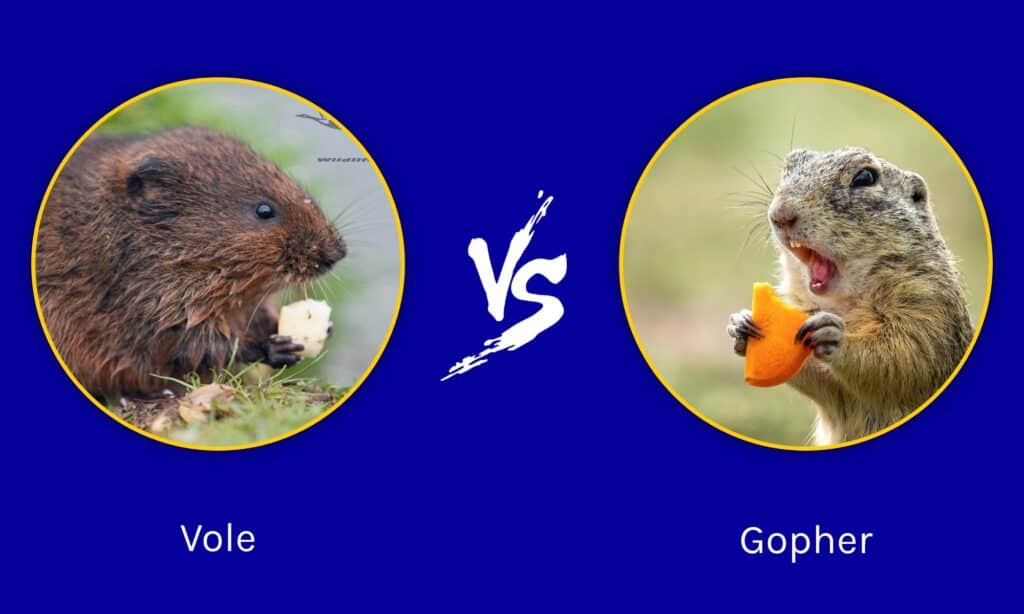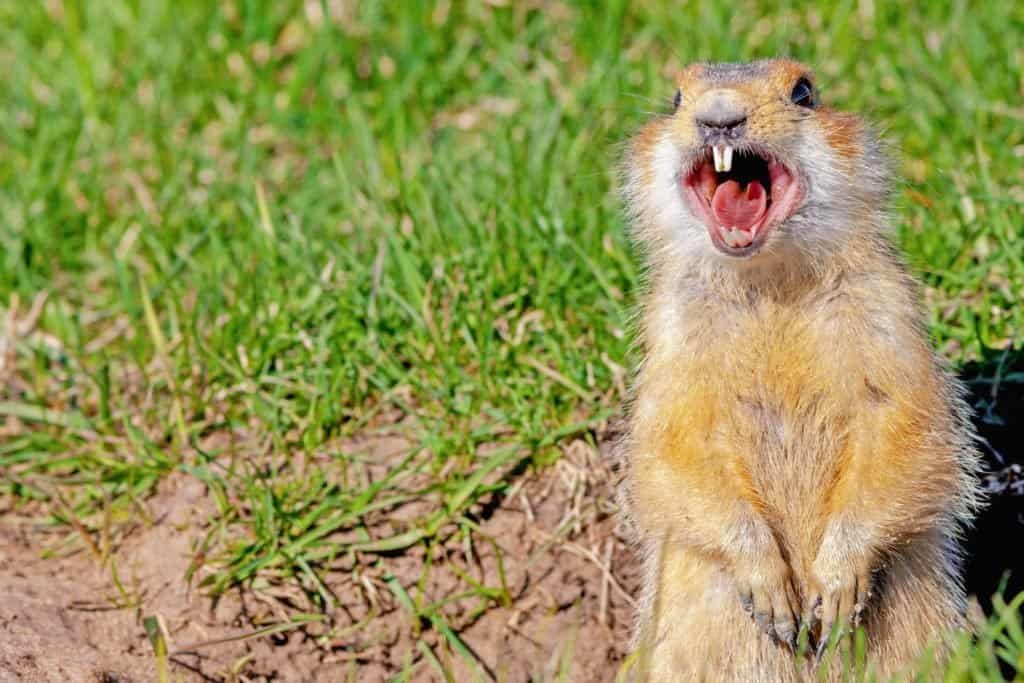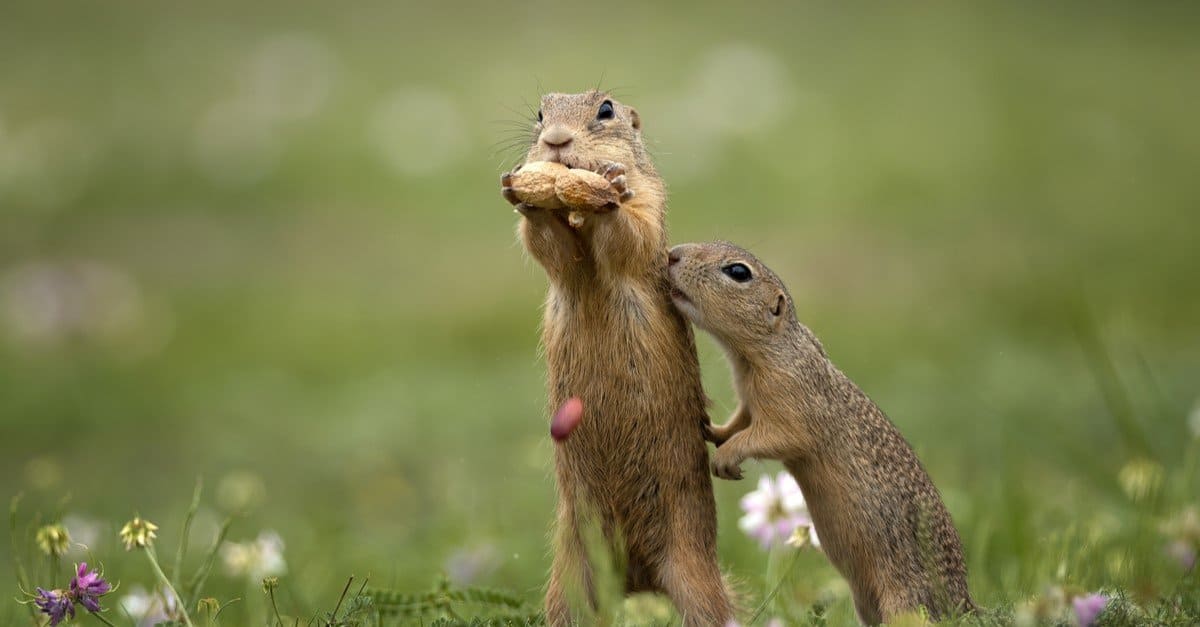Voles and gophers can both be sources of significant lawn destruction, but they’re all their own entirely distinct critters. These two can make any homeowner’s or gardener’s life difficult as they leave unsightly holes and mounds in the yard, flower beds, and play areas, which can be serious tripping hazards. Knowing what each species looks like and how they cause damage will help you practice the finest vole and gopher control tactics and safeguard your home’s yard. Let’s explore the differences between a vole vs gopher.
Comparing a Vole and a Gopher

| Vole | Gopher | |
|---|---|---|
| Appearance | – Has visible eyes – 3-7 inches long, weigh less than a pound – Have brown or light gray fur | – Has visible eyes and teeth – 5-14 inches long, weigh up to one pound – Fur is brown or black or gray |
| Diet | – omnivores | – herbivores |
| Habitat | – prefer areas with lots of green vegetation | – prefer soft, sandy soil that allows them to dig tunnels easily |
| Behavior | – social creatures – one burrow can house several young and adults | – not social creatures but share burrows with other animals |
| Damage | – not only harm your plant life but also jeopardize underground sprinklers, pipes, and wiring | – not only endangers the plants in the yard, but their digging can contribute to soil erosion |
The 5 Key Differences Between a Vole and a Gopher
The main differences between a vole and a gopher include their appearance, diet, habitat, behavior, and damage. While these small and furry creatures may look similar, their distinctions are easy to spot upon closer inspection.
Voles live in different parts of the world, including North America, Central America, Canada, Asia, and Europe. Gophers, also known as pocket gophers, have over 25 species thriving in North America and Central America. Voles leave above-ground runways in your lawn, whereas gopher infestations result in mounds of dirt at tunnel entrances. These two mammals couldn’t be more opposite, and we’ll go through each of their differences in depth.
Vole vs Gopher: Appearance

Voles do not have exposed incisor teeth like gophers.
©Peter Trimming / Flickr – Original
Voles, also known as meadow mice, have small eyes, black-to-gray fur, compact bodies, and a tail with no visible hair. They are approximately 3-7 inches long and weigh less than a pound. Voles have small but noticeable eyes and ears that are difficult to see through their coats. A vole has a long, pointed snout and short limbs. While voles may look like little gophers, they do not have exposed incisor teeth.
Pocket gophers get their name from the furry cheek pouches in which they store food and nesting material. They have uniform fur coloration, including black, brown, or gray. Gophers are heavier than voles, ranging from 5 to 14 inches long and weighing up to one pound. They have big yellow-orange front teeth, making them stand out among other pests. They also have small ears and eyes, which are still visible from a short distance.
Vole vs Gopher: Diet
Voles eat a broader pallet of food than gophers. Voles eat a variety of plants, roots, and rhizomes. Seats, crops, and bark are all edible but only eaten if food is scarce. If necessary, voles will also devour insects and animal carcasses. One of the reasons voles have such a diverse diet is that they do not hibernate, so they require a constant food source all year. They can change what they consume according to the season and availability.
Gophers are remarkable in that they are herbivores, meaning they exclusively consume plants and avoid insects and other animals. Plant roots and grass are the most prevalent dietary sources for gophers. Gophers will frequently emerge from their tunnels in search of food. They achieve this by gathering food through feed tunnels and often strive to put it as close as possible to a potential food source. When they find food, they either stuff it into their cheek pouches or drag it straight into their tunnels.
Vole vs Gopher: Habitat

Gophers can be found in grassy fields, meadows, and vegetation.
©SERGEI BRIK/Shutterstock.com
Voles love habitats with thriving green vegetation, particularly grassy fields, meadows, and vegetation near water sources like lakes and rivers. Voles are different from gophers in that they spend significantly more time on the surface.
Gophers prefer soft, sandy soil because it is easier to dig tunnels. They’re known for building elaborate tunnel systems, with honeycomb-like patterns, beneath well-kept homes and gardens.
Vole vs Gopher: Behavior
Voles are social creatures who can share a burrow with multiple young adults. They do not hibernate and are active during the day and night. They are a species that lives in colonies but spends less of their time underground. Voles have a limited lifespan of three to six months. However, females can become pregnant as young as three weeks old.
Except when females are caring for their young or during the breeding season, gophers live alone within their burrow systems but welcome other animals. Gophers do not hibernate and remain active all year. They can also be active at any time of day. Gophers reach sexual maturity at one year and survive three to five years.
Vole vs Gopher: Damage
If you don’t take action to control voles as soon as you see signs of their existence, the problem can spiral out of control. Holes near their surface runways are signs of vole infestations. You’ll also see damaged tree roots, yellowed and wilting plants, missing bulbs, the marks around the bottoms of trees and shrubs, and irregular paths of one to two inches of trampled grass or soil.
Gophers may destroy an entire row of plants by dragging them down into their tunnels. They will eat drip irrigation tubes and hoses as well. Irrigation processes can be disrupted by gopher mounds and tunnels, resulting in soil erosion.
Thank you for reading! Have some feedback for us? Contact the AZ Animals editorial team.








